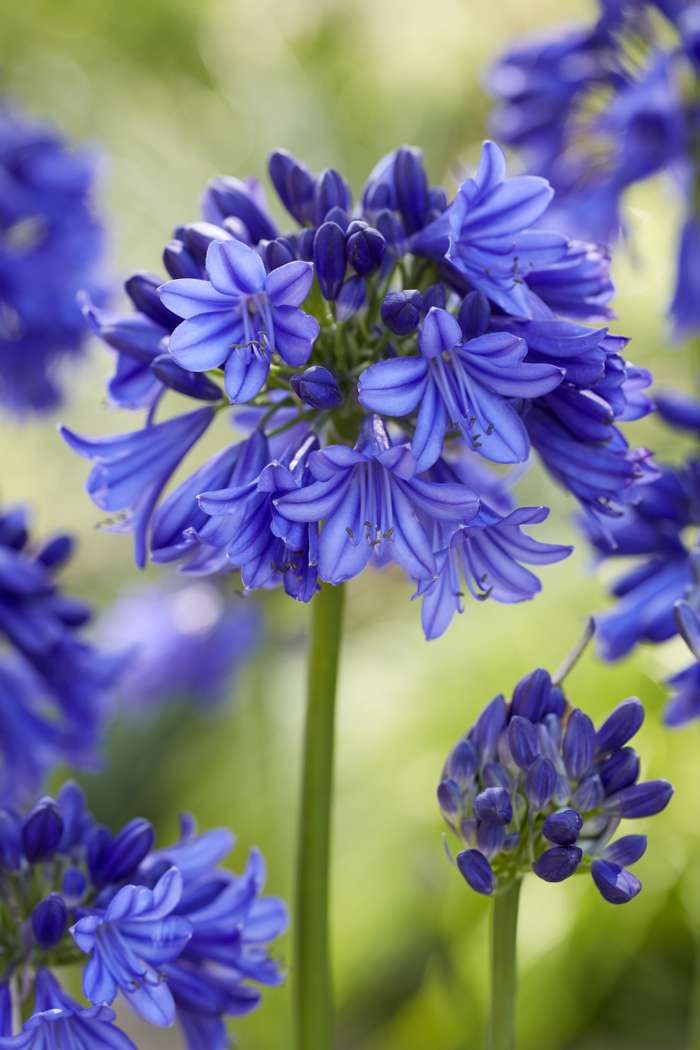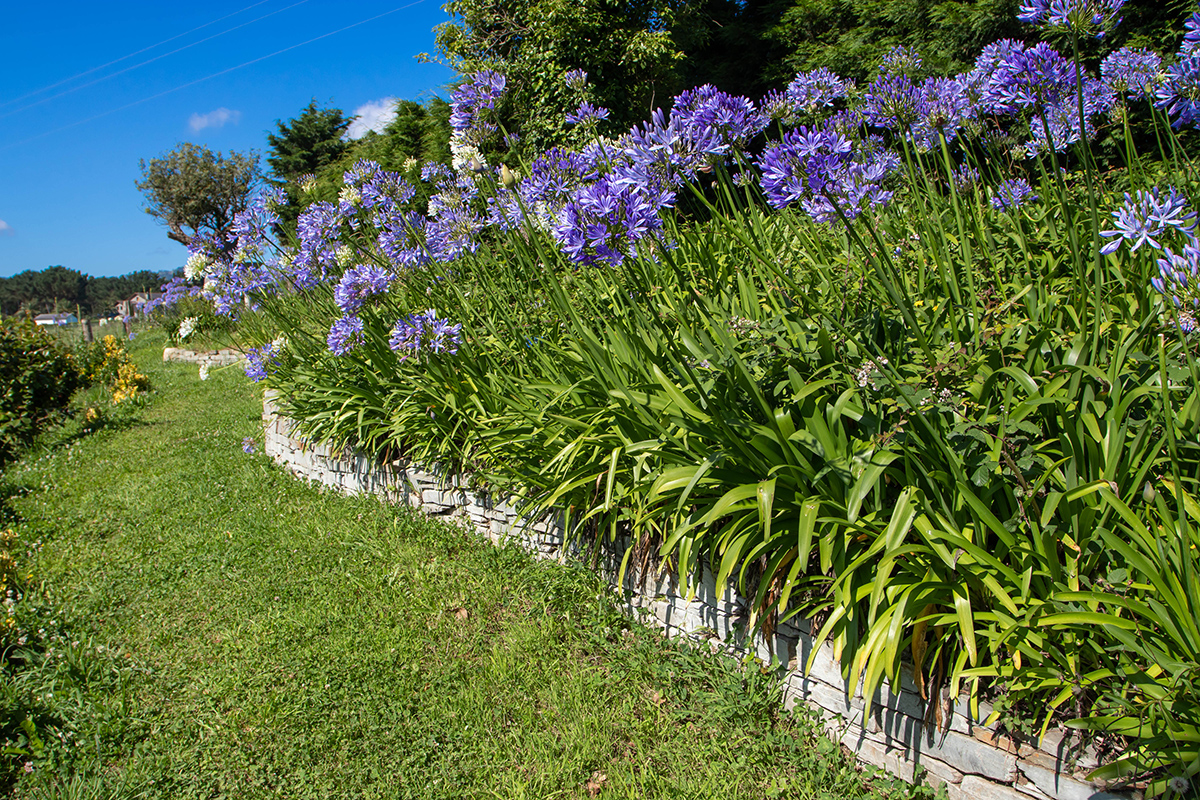Agapanthus Treatment Tips for Lush and Vibrant Flowers
Agapanthus Treatment Tips for Lush and Vibrant Flowers
Blog Article
Mastering the Art of Agapanthus Care: Important Steps for Healthy Growth and Vivid Flowers
In the realm of gardening, the growing of agapanthus stands as a satisfying venture for those who seek to nurture these stylish flowering plants. With their striking flowers and stylish foliage, agapanthus has recorded the attention of gardeners worldwide. Nonetheless, achieving optimum development and vivid blooms requires a nuanced strategy that includes numerous crucial actions. From selecting the ideal variety to mastering pruning techniques, the trip towards cultivating flourishing agapanthus plants is multifaceted and holds the crucial to opening the full possibility of these herb gems.

Selecting the Right Agapanthus Variety

When choosing the right Agapanthus selection for your garden, consider elements such as environment viability, bloom color, and development practice. Agapanthus, typically referred to as Lily of the Nile or African lily, can be found in a range of colors ranging from tones of purple and blue to white. Choose a bloom color that matches your existing garden scheme to create an unified landscape. Additionally, think about the climate in your area to guarantee the Agapanthus variety you select can flourish in your specific conditions. Some ranges are much more tolerant of chilly temperatures, while others choose warmer environments. Comprehending the development behavior of various Agapanthus selections is essential for proper positioning within your garden. Some ranges have a clumping growth routine, suitable for containers or boundaries, while others have an even more dispersing nature, appropriate for ground cover or mass plantings. By carefully examining these aspects, you can select the best Agapanthus selection to improve the appeal of your yard.
Perfect Planting Problems
Taking into consideration the ideal environmental requirements is crucial for effective Agapanthus growing. Agapanthus flourishes in well-draining soil with a somewhat acidic to neutral pH level. When growing, select a location that gets full sunshine to partial shade. In hotter climates, giving some afternoon shade can protect against scorching of the fallen leaves. Agapanthus plants are sensitive to chilly temperature levels and must be protected from frost during cold weather.
To make certain healthy growth and dynamic blossoms, plant Agapanthus light bulbs at a depth of regarding 2-4 inches and room them 8-12 inches apart. Mulching around the base of the plants aids retain wetness and reduces weed development.
Watering and Fertilizing Tips
Maintaining proper moisture levels and providing crucial nutrients are crucial elements in the care regimen for Agapanthus plants. It is important to strike a balance when it comes to watering Agapanthus. If overwatered, these plants favor continually wet soil however are prone to root rot. Throughout the growing period, water deeply when a week, guaranteeing the soil is well-draining to stop waterlogging. In hotter climates or throughout periods of drought, even more regular watering may be required to maintain the dirt evenly moist. However, decrease watering in the winter months to prevent water logged problems.
Fertilizing Agapanthus is vital for advertising healthy development and prolific blossoms. Use a balanced fertilizer, such as a 10-10-10 formula, in the very early spring as brand-new growth check my blog emerges. Repeat this application every 6-8 weeks throughout the growing period. Avoid excessive fertilization, as it can cause lavish foliage at the cost of blooms. Constantly adhere to the manufacturer's instructions for proper dilution and application techniques. By complying with these watering and feeding ideas, you can guarantee your Agapanthus plants prosper and create vibrant, durable flowers.
Trimming Methods for Agapanthus
Pruning Agapanthus plants at the suitable times and with proper techniques is important for maintaining their health and advertising ideal growth and flowering. The excellent time to trim Agapanthus is in late winter months or early spring prior to brand-new development arises.
Deadheading spent flowers can additionally reroute the plant's energy into producing more blossoms rather than establishing seeds. If you desire to collect seeds for proliferation, leave some flowers to mature and dry on the plant.
Bear in mind to make use of tidy, sharp tools to make specific cuts and reduce the risk of introducing illness. Agapanthus. Regular trimming will certainly aid maintain your Agapanthus looking cool and healthy and this balanced while making sure a plentiful display screen of beautiful blooms
Handling Common Bugs and Conditions
After guaranteeing appropriate trimming techniques for Agapanthus, it is important to attend to typical pests and diseases that can affect the wellness and vitality of these plants. Agapanthus plants are normally sturdy however can still come down with particular issues. One typical pest that influences Agapanthus is the Agapanthus gall midge. This little, orange fly lays its eggs in the foliage, leading to altered growth and blossom buds that fall short to open. To combat this insect, prune and destroy any type of affected plant parts and take into consideration using insecticidal soap.
Another typical concern is fungal fallen leave place, which provides as dark lesions on the leaves. To stop fungal conditions, make certain excellent air flow around the plants, prevent overhead watering, and get rid of any type of contaminated fallen leaves quickly. In addition, Agapanthus plants can experience root rot if they are planted in inadequately draining pipes soil. To avoid this, plant Agapanthus in well-draining dirt and stay clear of overwatering. By being cautious and taking punctual activity versus parasites and diseases, you can help your Agapanthus plants grow and produce vivid blooms.

Conclusion
Finally, mastering the art of agapanthus treatment entails choosing the ideal range, offering perfect planting conditions, correct watering and feeding, suitable pruning techniques, and dealing with common bugs and illness. By complying with these important actions, you can make certain healthy and balanced development and vivid blooms for your agapanthus plants. Remember to on a regular basis check and preserve your plants to promote their overall health pop over to this site and long life.
To ensure healthy growth and dynamic blossoms, plant Agapanthus bulbs at a depth of concerning 2-4 inches and space them 8-12 inches apart. By following these watering and fertilizing tips, you can ensure your Agapanthus plants prosper and create vibrant, long-lasting flowers.
One common insect that influences Agapanthus is the Agapanthus gall midget. Furthermore, Agapanthus plants can endure from root rot if they are planted in inadequately draining pipes soil. By following these important actions, you can make sure healthy and balanced development and vivid blossoms for your agapanthus plants.
Report this page